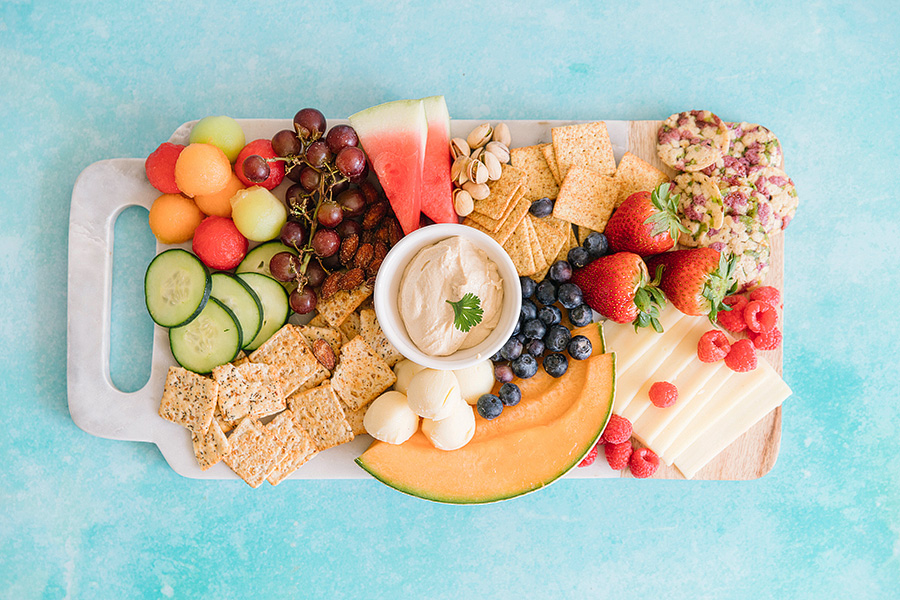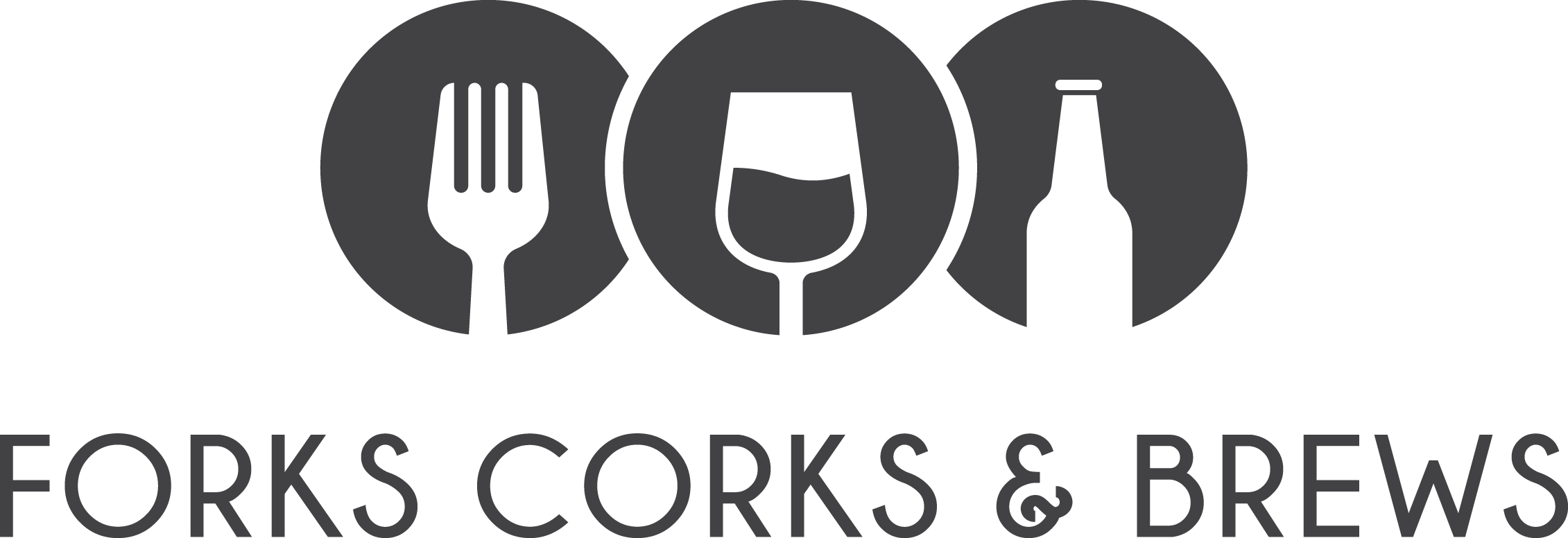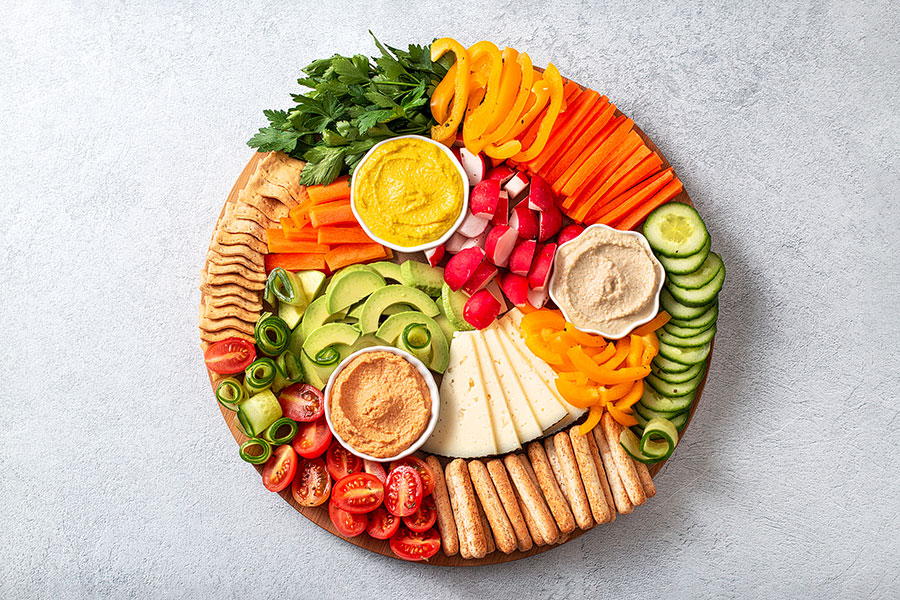If you’ve entertained and wondered if you could have a charcuterie board with veggies, the answer is yes. Technically, charcuterie means cooked meats. In the broader sense charcuterie has expanded to include cheeses, veggies, fruits, olives, nuts, and even desserts. We even seen full meals on a charcuterie board.
Why Prepare a Veggie Charcuterie Board?
There are a variety of reasons we like to serve food this way. We have friends or clients who are vegetarians. Veggie boards are typically lighter fare and are a good choice before a heavier main meal. When we’re serving charcuterie as our meal, we include one board with just veggies. We often have a second board with meats and cheeses and then another one with just desserts.
Our definition and use of the word charcuterie expands to include the foods we like to serve.
Where Do I Start?
First, we like to think about our purpose and our guests when making a veggie charcuterie board. Is our charcuterie board going to be served as a veggie tray appetizer or the main course? Do we have several guests coming or just a few? Do we want to add cheeses, olives, nuts, dips, or fruit? Or is this strictly vegetables?
Do we need to add spreads? Are we going to add breadsticks, crostini, crackers, or baguette? How many guests are we serving? How do I know the best veggies for a charcuterie board?
Once you have an idea of the number of guests and your purpose, you can get started.
What Foods Should I Add?
If we are just serving veggies, we like to use our favorite ones. Sometimes we may have a guest or two who just doesn’t like certain foods. When we know that, we can avoid using those. For me, I would be happy to not see any cucumbers at all. However, not everyone is like me. Try to plan foods that might appeal to most of your guests.
Some of the best veggies for a charcuterie board that we like to use are:
- Carrot sticks
- Broccoli florets
- Jicama slices
- Grape or cherry tomatoes
- Mini peppers, sliced thin
- Sugar snap peas
- Blanched or pickled green beans
- Blanched or pickled asparagus
- Mini endive
- Zucchini rounds or sticks
- Celery sticks
- Cucumbers
- Radishes
- Avocado slices
We like to add in a few other items and still keep our board vegetarian. Good options we like to use are:
- Small pickles
- Gherkins
- Olives
- Pickled white asparagus
- Nuts
- Peperoncini peppers
- Pickled red onions
In addition, we usually add some types of dips or spreads. These might include:
- Hummus, either store bought or homemade
- Jalapeno jelly
- Fig spread
- Spicy raspberry jam
We also include:
- Breadsticks
- Crostini
- Crackers
If you and your guests like cheeses, they make a great addition to your veggie charcuterie board. Most cheese pair well with veggies. Some of our favorite cheeses include:
- Aged Gouda and or smoked gouda
- Brie
- Manchego
- Parmesan Reggiano
- Aged cheddar
- Goat cheese
Fruits make a good addition and pair well with veggies and cheeses. If you want to make a vegan charcuterie board then add raw nuts and omit cheese.
- Bright red raspberries
- Plump dark blackberries
- Fresh blueberries
- Strawberries with the tops still on
- Fresh apple slices
- Fresh pear slices
- Fresh fig slices
- Fresh melon slices
- Fresh melon balls
- Pomegranate seeds
- Dried apricot slices
- Dried mango slices

Don’t Forget to Add Healthy Fats
Add raw nuts to your veggie charcuterie board. Fat is crucial to any diet, but moderation is key. It maintains your body’s cells and brain health, and aides in the absorption of vitamins.
Here is a list of healthy nuts you can add to your veggie charcuterie board. You want to eat raw nuts without any flavoring. We typically buy organic raw nuts.
- raw almonds
- raw cashews
- raw walnuts
- raw sunflower seeds
- raw pistachios
- raw pumpkin seeds or pepitas
Where do I buy my food for my charcuterie board with veggies?
We like to shop our local san diego farmers markets when buying food for our veggie charcuterie boards. If we need fresh produce in a hurry we like to shop at Sprouts, mainly for the convenience and organic selection of fresh fruit and veggies.
How Do I Arrange My Board?
This is usually a personal preference. We have arranged our veggie charcuterie boards in a variety of ways.
Start with a focal point in the middle, especially if you are using a round board. Add circles of food around that focal point. You can arrange by color, by size, by shape, or however is pleasing to you.
If we use a longer board, we may run slices of food at a diagonal across the board. We alternate colors so all the green veggies don’t end up at one end and all the red ones at the other end. Again, make it pleasing for your guests.
When we use clear glass bowls for nuts, spreads, or jams we place those near the veggies that pair well. For instance, breadsticks and carrot sticks work well next to a bowl of hummus. Sugar snap peas work well next to nuts. Celery sticks and jalapeno jelly are a good combination. It depends on what you have and how it pairs with other foods.
We always add herbs, edible flowers, and dark, baby spinach leaves for decoration and eye appeal. Weave in some rosemary between rows of cheeses. Add a few bay laurel leaves to offset the jicama slices or the endive.
How Many Ounces of Food Do I Need Per Person ?
When we plan the amount of food we need for our veggie charcuterie board, we use a general rule of two three-ounce portions per person. This works well if we have other courses planned. If we don’t have any other meals planned, we increase the amount to three or four-ounce portions per person.
For us, it’s better to have too much food than not enough. We keep extra food in the refrigerator and everything is prepared a head of time. Our veggies are sliced and in separate containers, our cheeses are cubed or sliced. Crackers, crostini, and breadsticks are easy to grab and replenish the board.
We keep plenty of utensils available and we make sure our guests can easily serve themselves without having to find a spoon or a knife. In addition we use cloth napkins and small serving plates. Using smaller serving plates allows us more room for our charcuterie displays.
Can I cut on my charcuterie board?
Creating a charcuterie board with a variety of vegetables requires a lot of preparation. In that case we use a separate cutting board for chopping vegetables. Our charcuterie boards showcase food in a fun and creative way so we don’t want to see knife marks on our display boards.
In conclusion charcuterie boards provide a fun way to serve appetizers and even full meals. Whether we’re making a classic charcuterie platter with meat and cheese or a board with veggies, we love to create elegant displays of food.
Looking for other vegetarian food options? Try our healthy vegetable curry recipe, it’s a completely plant-based meal!

